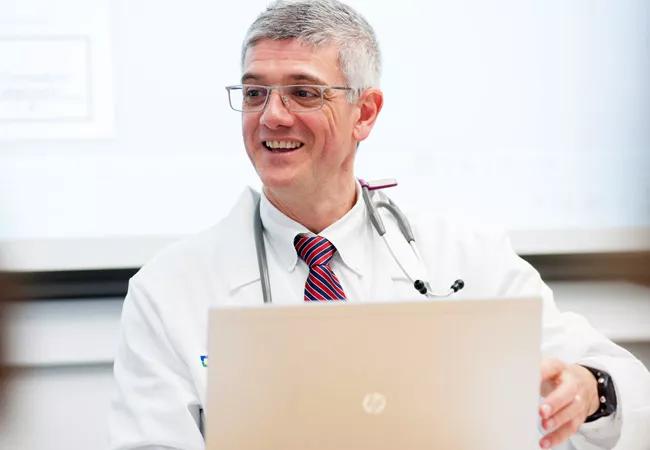A Q&A with the Director of Obesity Programs

It was the bias toward those suffering from obesity that drove Bartolome Burguera, MD, PhD, to pursue a specialty in endocrinology. CQD sat down to learn more about Dr. Burguera.
Advertisement
Cleveland Clinic is a non-profit academic medical center. Advertising on our site helps support our mission. We do not endorse non-Cleveland Clinic products or services. Policy
“Patients with obesity suffer stigma and are being treated with bias by their coworkers and in many circumstances by their physicians. Obesity is a chronic disease. I make sure I understand their concerns and work with them to develop a realistic therapeutic plan,” says Dr. Burguera of how he develops relationships with patients. “I listen with empathy, trust and respect.”
Looking to the future, he is excited by the opportunity to change the paradigm of how we treat chronic diseases, such as type 2 diabetes and heart disease, which in turn, will lower the costs associated with treatment. “Such diseases are often caused or accentuated by long-term obesity. However, we have invested minimal effort in treating this primary problem. I am very invested in seeing the tremendous effects that I believe treating obesity can have on the cost and effectiveness of healthcare in the future.”
In your career so far, of what are you most proud?
Working with great professionals who helped me identify my passion for an area of clinical practice and research that 25 years ago lacked general interest, and today is tackling a disease that affects 30 percent of our population and is responsible for more than 8 percent of the cost of our healthcare budget.
You speak three languages (Spanish, Galician and English). Why is this important and how does it put patients first?
I really appreciate the sense of relief shown in my patients’ faces when they see that they can talk to their physicians in their native language. Many are from Puerto Rico, Dominican Republic and other Spanish-speaking countries.
Advertisement
This not only gives them the opportunity to express themselves better but also in many circumstances and after asking the family member to leave the room, they can share concerns and aspects of their life that otherwise they would never have addressed.
Share a time-saving technology tip?
Virtual shared medical appointments (SMA). I think that within five years we will be able to provide optimal care in the context of an interdisciplinary approach to patients all over the world suffering chronic conditions such as obesity, diabetes and hypertension.
We now have an obesity therapy virtual SMA pilot program through our Employee Health Plan, which includes remote monitoring of weight, blood pressure, blood glucose and physical activity. Patients learn and support each other, while exchanging experiences in a supervised medical setting.
Advice you would give to your 20-year-old self?
Be patient, be focused and ‘do not get your fingers into too many pies.’
Advertisement
Advertisement

Advocacy group underscores need for multidisciplinary expertise

A reconcilable divorce

A review of the latest evidence about purported side effects

High-volume surgery center can make a difference

Advancements in equipment and technology drive the use of HCL therapy for pregnant women with T1D

Patients spent less time in the hospital and no tumors were missed

A new study shows that an AI-enabled bundled system of sensors and coaching reduced A1C with fewer medications

Association revises criteria for the diagnosis and resolution of severe conditions